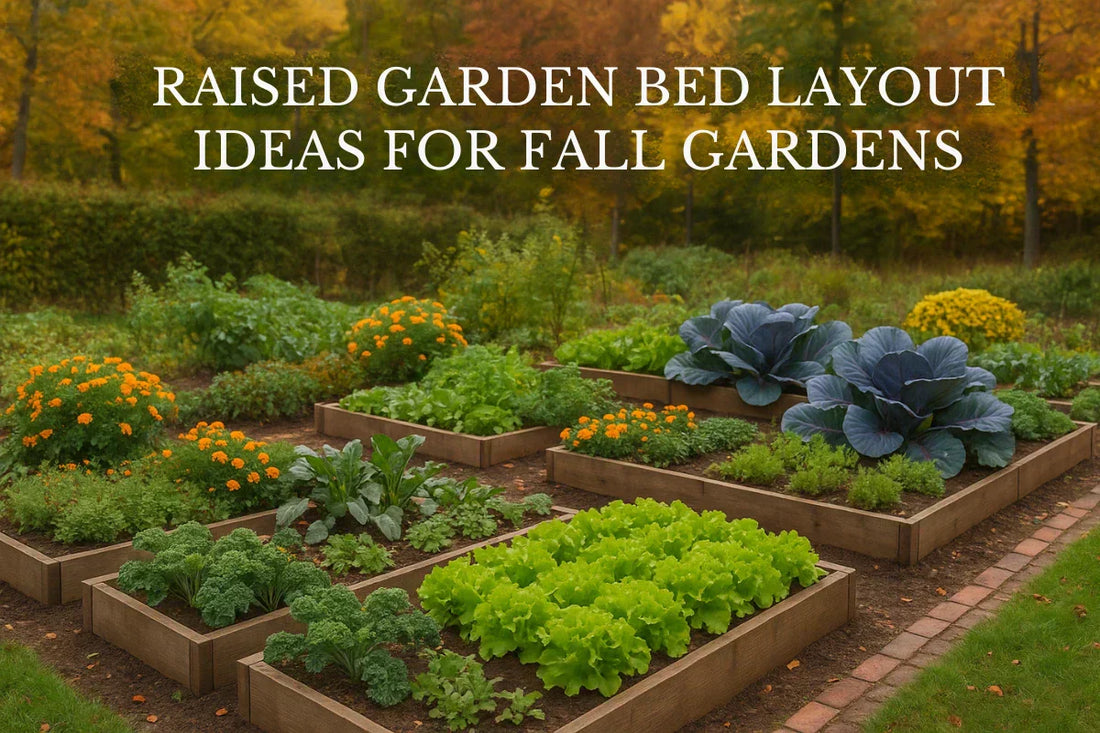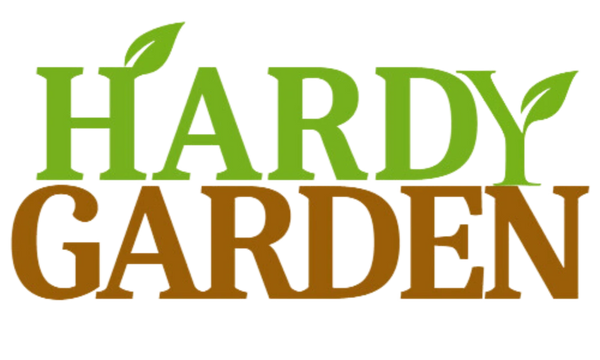
Raised Garden Bed Layout Ideas for Fall Gardens
Share
As the crisp autumn air settles in and the gardening season winds down, fall provides the perfect opportunity to maximize your raised garden bed. Whether you’re looking to extend your growing season, experiment with seasonal vegetables, or simply prepare your garden for the colder months, a well-planned raised bed layout is key. In this guide, we’ll walk you through the best raised garden bed layout ideas for fall, helping you grow more, save space, and enjoy the fruits of your labor all season long.
Why Raised Garden Beds are Perfect for Fall Gardening
Raised garden beds are not just for the spring and summer months—fall gardening offers unique opportunities that raised beds can enhance. Here’s why:
- Better Soil Drainage: Raised beds offer superior drainage, which helps prevent root rot during fall rains and ensures plants don’t become waterlogged.
- Extended Growing Season: Raising your garden beds allows the soil to stay warmer longer, extending the growing season well into the fall.
- Improved Accessibility: Raised garden beds make it easier to garden with less bending, reducing strain on your back while you tend to your plants.
- Better Pest Control: With elevated soil, you can easily reduce the number of pests like slugs and snails, which are common in cooler weather.

5 Raised Garden Bed Layout Ideas for Fall
Let’s explore some of the most effective raised garden bed layouts that will make the most of your fall gardening efforts.
1. Square Foot Gardening Layout
Best For: Small spaces and beginners.
Square foot gardening maximizes every inch of your raised bed. This method involves dividing your bed into small, 1-foot squares and planting different crops in each square, depending on their size. For fall, you can plant leafy greens like lettuce, spinach, and kale in the smaller squares, while larger crops like cabbage and broccoli can take up more space.
Why It Works for Fall:
- Perfect for cooler weather crops that grow quickly.
-
Reduces overcrowding and ensures plants get enough sunlight.
Easy to manage and harvest.
Use trellises to grow climbing plants such as peas or beans to make use of your limited growing space.

2. Companion Planting Layout
Companion planting involves planting complementary crops next to each other to improve growth, reduce pests, and increase yields. For example, pairing carrots with onions or kale with garlic can prevent pests and improve the flavor of your crops.
Why It Works for Fall:
- Helps plants thrive through natural pest control and better nutrient sharing.
- Reduces the need for chemical pesticides, which is ideal for fall crops that are more sensitive to harsh treatments.
- Allows for diverse planting, making your raised bed more productive.
Grab your FREE Companion Planting Chart!
Grow smarter, not harder. Plan your garden like a pro.
Click to download now: https://bit.ly/4fiuvMK

3. Row Layout with Narrow Walkways
Best For: Larger raised beds and heavy-duty gardeners.
If you have a larger raised bed, consider using the classic row layout, with narrow walkways between rows for easy access to all plants. This layout works well for fall crops that need more space, like pumpkins, squash, and cabbage.
Why It Works for Fall:
- Ideal for crops that need more space to grow, such as pumpkins and large root vegetables.
- Allows for easy crop rotation, which helps prevent soil depletion and pest buildup.
- Perfect for high-yield crops that will continue to grow throughout fall.
Pro Tip: Use drip irrigation or soaker hoses along rows to keep the soil consistently moist, which is essential for fall crops.

4. Circular or Spiral Layout
Best For: Small, aesthetically pleasing gardens.
For a more unique, visually interesting garden, consider creating a circular or spiral layout in your raised bed. This layout maximizes space by allowing for a concentrated planting area, making it perfect for smaller spaces or for those who want to create a visually striking garden.
Why It Works for Fall:
- Excellent for growing a mix of small, fast-growing crops and leafy greens.
- Adds visual interest to your fall garden and helps organize plant varieties.
- Encourages a creative approach to gardening that can be a fun, experimental project.
Incorporate a central focal point, such as a decorative herb garden or a small water feature, to enhance the garden's appearance.

5. Three-Sisters Layout (for Fall Crops)
Best For: Growing a traditional, sustainable garden.
The Three-Sisters method involves planting corn, beans, and squash together in a mutually beneficial layout. This ancient technique allows each plant to help the others grow: corn provides a natural trellis for beans, beans fix nitrogen into the soil, and squash acts as a ground cover to suppress weeds.
Why It Works for Fall:
- Perfect for the fall harvest when corn, beans, and squash are all typically ready to be harvested.
- A great way to work with nature’s cycles and create a balanced, productive garden.
- Supports sustainability and reduces the need for artificial fertilizers or pesticides.
Pro Tip: Plant the squash on the outer edges of the bed so it has space to spread out without crowding other plants.

Key Considerations for Fall Raised Garden Bed Layouts
Before diving into layout ideas, it's essential to consider the unique challenges and opportunities that come with fall gardening. Here are a few tips to ensure success:
- Seasonal Vegetables: Focus on fall crops such as kale, spinach, broccoli, and root vegetables like carrots and beets, which thrive in cooler temperatures.
- Frost Protection: Consider using row covers or cloches to protect your plants from early frosts.
- Soil Preparation: Add compost, soil enhancer or organic matter to replenish nutrients that may have been depleted over the growing season.
Tips for Maximizing Your Fall Garden's Potential
- Season Extension: Use row covers, cloches, or cold frames to protect your fall crops from early frosts and extend the growing season.
- Soil Health: Add compost, organic matter or organic fertilizers to improve soil fertility. Fall is the perfect time to replenish nutrients for the next planting season.
-
Maintenance: Keep an eye on pests and weeds, as fall gardens can still be vulnerable to certain pests that thrive in cooler temperatures.
Conclusion
With the right raised garden bed layout, fall gardening can be a rewarding and productive experience. By selecting the best layout for your space, experimenting with companion planting, and considering season-extending strategies, you can ensure a successful harvest all fall long.
Ready to start your own garden? Check out our comprehensive gardening guides for more tips, or sign up for our newsletter to stay updated on seasonal gardening advice!
